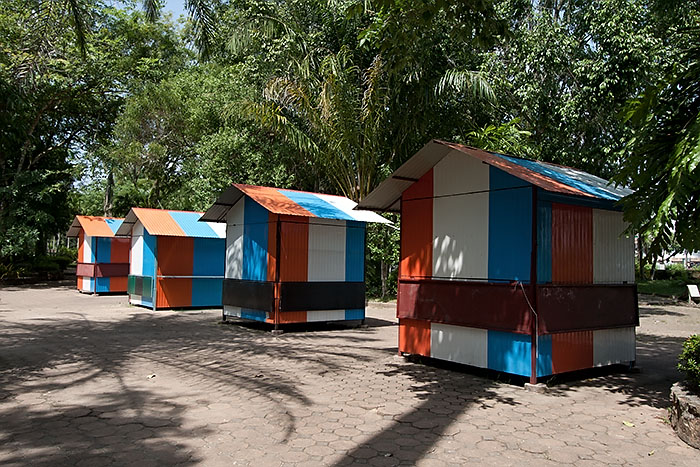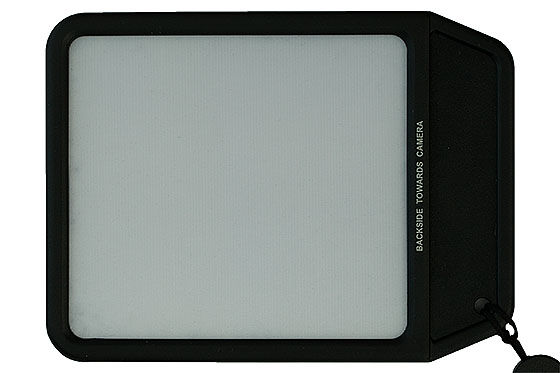Electra Colour Balance Panel Review
Video Review
You can watch my video review of this accessory on YouTube at the following link:
Excella 'Stardust Plus' Cheap Studio Lighting Kit
Introduction
There is lots of technical information about colour temperature on the Internet and therefore I won't repeat it here. I like to think of things as simply as I can.
The light from the sun at different times of day and under different conditions is different. Natural sunlight is also different to artificial light sources, which again are all different.
Our eyes are very good at compensating naturally. A piece of pure white card tends to look white to us regardless of the light source. This isn't the case with photographic film and digital sensors.
If no compensation is made, images will display some kind of a colour cast under different lighting conditions.
In the old days, processing labs compensated for this in the developing process. Nowadays, with digital cameras we all have to do our own post-processing.
We can adjust for colour casts with software such as Adobe Photoshop, using either our eyes and individual colour preferences, or by trying to find a neutral grey area within the image to use as a reference.
A neutral grey has RGB values that are the same. With Photoshop you can select the Color Sampler Tool and then try to find a patch of colour in the image that is neutral grey. Alternatively, you could carry a grey card and include it in one of your photos to use as a reference in post processing. Grey cards tend to get damaged and need to be replaced fairly often.
If shooting RAW images, you can adjust the white balance with suitable RAW image editing software supplied by the camera manufacturer or a third party.
These methods are perfectly acceptable, but they can be time-consuming and the colour accuracy may not be true to the original scene.
The white balance options in digital cameras are factory set for different lighting conditions, but it is impossible for these settings to be accurate in every situation.
There is another method remaining.
Most digital cameras allow for a custom white balance setting. A white balance reading can be taken at the shooting location before shooting and this setting will be more accurate than the factory pre-programmed setting.
No cast correction is required in post processing if the white balance setting was accurate at the time of shooting. If you are shooting RAW and using RAW image editing software, simply choose the 'As Shot' white balance option.
Special panels have been designed to be used for this purpose. This page is about one of them: the Electra Colour Balance Panel.
Electra Colour Balance Panel
Asia is the home of the cheap knock-off. Very little innovation or radical free thinking comes out of Asia. Products get invented in the Western world and then copied in Asia at a fraction of the price.
Some copied items are useless, while others are very good. They can be as good as the original item abd because labour is so cheap they are very cheap.
When I saw the Electra Colour Balance Panel for the first time I immediately thought of the ExpoDisc. It looks very similar to the ExpoDisc Video Format Filter.
The ExpoDisc costs US$169.95, whereas the Electra version sold in Thailand is equivalent to US$23.77. That's a big difference.
It seems very well made and boasts 'The most modern multi-layer technology'. Three layers are used:
- Granitic-surface light diffuser layer
- Pearl diffuse layer
- Prism technology layer
Using The Panel
I currently use a Canon 40D. Different cameras may have different procedures.
- Set the camera aperture and shutter speed for a correct exposure.
- Set the lens to manual focus. (If auto focus is selected, the camera probably won't be able to focus and this will prevent the shutter from being released.)
- Place the panel in front of the lens and release the shutter. The manual says to aim the camera at your subject. Better results may be obtained by shooting from the subject back to the position of the camera.
- Go into the camera's menu and select Custom WB. Select the image you have just taken, which should simply be a uniform light grey.
- Now select the Custom White Balance option on the camera's White Balance selection.
Samples
The following pairs of images were taken using a tripod. No colour correction at all was performed in post processing. The images are as they came out of the camera, along with some very minor sharpening applied in post processing.
RAW format was used and the only difference between each photo was the white balance setting. The 'As Shot' option was selected in Adobe Camera Raw (ACR).
The image you see at first uses the camera's Auto White Balance (AWB) option. If you mouse over the image it will be replaced with an image using the Custom White Balance setting.
You may need to wait a few seconds for the images to download and you may also need to click on the image to get the images to swap. This function uses Javascript and you need to have Javascript enabled in your web browser.

Canon 40D plus Canon EF 100mm f/2.8L IS Macro

Canon 40D plus Canon EF-S 10-22mm f/3.5-4.5
Conclusion
The Auto White Balance (AWB) setting in digital cameras I have owned does a pretty good job most of the time. If not, colour balance can be changed fairly easily in post processing, especially if you shoot in the RAW format.
I shot digital images for eight years before owning a colour balance panel and managed to get colours that I liked without setting my white balance at the time of shooting.
If accuracy is important and you don't believe your eyes or your monitor, it would be a good thing to make sure that the camera white balance setting is set accurately at the time of shooting. The panel may also come in useful if you are shooting in conditions with strange lighting.
I can't quite understand a well known Internet commentator who says what a good thing the ExpoDisc is, but then winds up the saturation levels on his cameras as far as they will go. If the function of the ExpoDisc is to get accurate colours, then playing around with increased saturation will just defeat the objective.
How does it compare to the original ExpoDisc? I don't know because I don't own an original ExpoDisc and I'm not likely to own own because of the high prices.
Details
Lens Diameter: 52mm to 86mm
Date Purchased: June 2012
Supplier: Chia Color Lab, Hat Yai, Thailand
Price: 750 Thai Baht
Manufacturer's website: Ekasilp Industry Ltd., Part.
Other Review Pages You May Be Interested In


